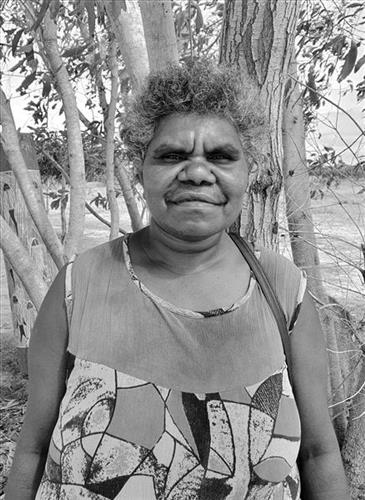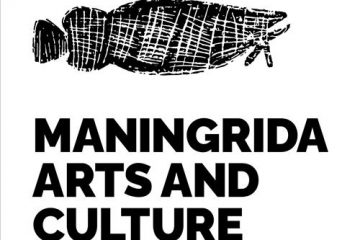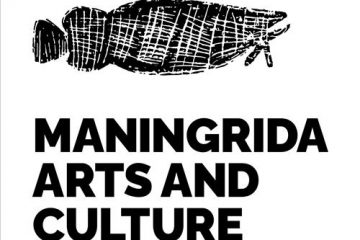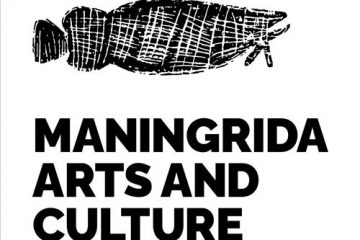111982229535
Ngukal Golden Travelly
This painting is a depiction of Nguykal, the Golden Trevally [Gnathanodon speciosus]. In the early times of creation, Nguykal, the Trevally ancestor, travelled as two fish from the east along the coast. As he travelled along the coast he named clans or bapurru. These clans include Gamarl, Mardarrpa, Ritjarrngu, Gumatj, Dhalwangu, Wan.gurri and Warramiri. When Nguykal reached Gu-mugumuk on the east coast of Cape Stewart he leaped from the sea and landed inland at Gamurra Gu-yurra on Warrawarra clan lands. This created the sacred dreaming called Baltha, which is represented in design as a forked shape, reminiscent of the tail of a fish. Baltha stands as a tree at Gamurra Gu-yurra, and the forked shape that the main branches make with the trunk betray its sacred associations.
The Trevally ancestor then returned to the sea and kept travelling around Yinangarnduwa (Cape Stewart). Upon reaching Burnbuwa, a site midway between Yinangarnduwa and Yilan outstation, he became frightened by the appearance of lunggurrma, the clouds and rain associated with the northwest monsoon, which originated from beneath the sea. At this point the two fish separated. One of the Nguykal ancestors went inside at Burnbuwa and remains there as a dreaming, while the other returned back to the east and kept travelling until he reached the Yirrkala area. There he named a site Burnbuwa, which marks the link between these places.
In the painting we can see trevally swimming in two lines. This reflects close observation of the behaviour of schools of trevally, which spend much time swimming in and around the rocky reefs that lie close to shore along the north-central Arnhem Land coast. The formation swimming of the trevally has a religious dimension, and when the Gamarl and their close clansmen dance the Trevally ancestor, they also dance in formation like a school of fish and at one stage two groups of men will dance towards each other.
The cross-hatched stripes of infill deviding the fish represent rrawa or country at Burnbuwa and other places along the north-eastern Arnhem Land coast where Nguykal swam. Ganyjibala has depicted the country in sections, here overlayed with bird tracks, to indicate that different clan groups own this country. These groups each hold tenure over separate sections of country, but together they form a ‘company’ of related clans. These clans form a network linked by a system of reciprocal kinship and ceremonial ties. The Golden Trevally Ancestor is the mythological explanation for the links between the different clan groups, and today the celebration of Nguykal’s creation journey in song, dance and design by the members of these groups continues to strengthen the kinship and ceremonial links between the members of these clans



